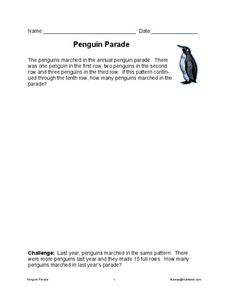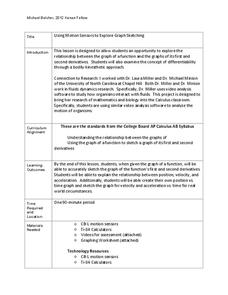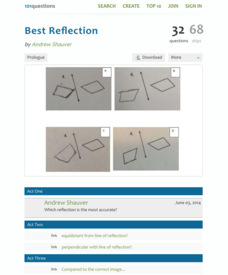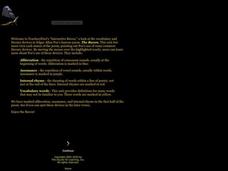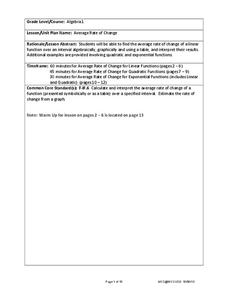Math Wire
SnowDaySnowDaySnowDaySnowDay...
How many times can you cheer about a snow day before you get to the 100th letter? Find out with a creative word problem that challenges young mathematicians to determine what the 100th letter will be in a sequence of letters.
Illustrative Mathematics
Valid Equalities?
True or false: 20 = 10 + 10. The statement is true because two 10s make a 20. These are the types of equations learners must label or false. They must also explain in mathematical terms how they know.
Math Wire
Penguin Parade
Make way for the penguin parade! Based on a given pattern of penguins in an ascending number of rows, how many penguins were marching this year? Learners solve two word problems to find the answer.
Curriculum Corner
Find the Factors
Challenge mathematicians to show what they know with a worksheet all about factoring. Scholars factor seven given numbers to identify which of the variety of choices does not belong.
Scholastic
Why Did the Shoe Go to the Doctor?
Your learners will use all the hours in a day to complete this riddle! They must figure out how many hours are in one day, three days, six days, and so on by using multiplication. They then use their answers to puzzle out the riddle.
Common Core Sheets
Determining Coordinates: Reading Positive & Negative Coordinates
For kids who have a hard time with graphing, a grid with coordinates can look like an unsolvable puzzle. A series of worksheets uses symbols and shapes like hearts, stars, and letters to help kids find the correct coordinates.
Balanced Assessment
Square in Square
Challenge the class to devise a method to determine the dimensions of a rectangle inscribed in another rectangle. Pupils make connections between functions and geometry as they examine the area and perimeter of a square or...
Kenan Fellows
Using Motion Sensors to Explore Graph Sketching
Get moving to a better understanding of graphs of derivatives. Using motion sensors, scholars vary their velocities to create graphs of the first derivative of a function. The activity challenges groups to first create a script of the...
101 Questions
Best Reflection
Which is the best reflection of them all? Given four diagrams, pupils determine which one shows the most accurate reflection of a quadrilateral. Two images provide the distances of each vertex from the line of reflection, as well as the...
Super Teacher Worksheets
I Have...Who Has...Multiplication Game
Get the whole class involved in practicing their multiplication facts with this fun collaborative activity. With each child given a card containing both a product and an unrelated multiplication sentence, the activity begins as...
Illustrative Mathematics
Jayden’s Snacks
A quick activity to test the knowledge of your learners on adding and subtracting with decimals. They must calculate how much Jayden spent at the store and how much money he has remaining.
Illustrative Mathematics
Comparing Freezing Points
Subtracting negative numbers can be confusing to your middle schoolers. Here, they are able to draw a number line and put their answer in sentence form to check their understanding of negative numbers.
Illustrative Mathematics
Computations with Complex Numbers
This quick set of problems provides a brief refresher on the arithmetic of complex numbers. Learners need to multiply, add and subtract, and remember features of i when raised to a power. Included solutions are clear enough that...
West Contra Costa Unified School District
Writing Exponential Functions Based on Data
Give your class a concrete example of exponential growth and decay using this hands-on activity. These Algebra II lessons allow for the exploration of exponential growth and decay models, as well as the discovery of the patterns of...
Illustrative Mathematics
Solving Two Equations in Two Unknowns
More than just a one-problem resource, learners must explain their answer and incorporate a writing component to mathematical thinking. The resource also includes an explanation of the solution to help with the reasoning.
West Contra Costa Unified School District
Decimals and Fractions
Reinforce the concept of fractions and decimals as part of a whole with a instructional activity that begins with a mixed review, then goes into a three problem guided practice, and ends with a collaborative activity. The guided practice...
West Contra Costa Unified School District
Average Rate of Change
Learners investigate average rates of change for linear functions and connect the concept to slope. They then determine average rates of change in quadratic and exponential functions.
Math Wire
Gingerbread Man Bake Sale
Gingerbread cookies aren't just a sweet treat! Scholars identity the amount of combinations a baker can make in his gingerbread cookies using limited quantities of decorating ingredients.
Curriculum Corner
Rounding Numbers – 10s
Thirty-two flash cards and a 14-problem worksheet pair together to reinforce the concept of rounding to the nearest ten.
Curriculum Corner
Rounding Numbers – 100s
Mathematicians prove their proficiency for rounding to the nearest 100 with forty-four flash cards and a activity, each offering an assortment of whole numbers.
Illustrative Mathematics
Modeling London's Population
Looking at London's population from 1801–1961 in 20 year increments, high school mathematicians determine if the data can be modeled by a given logistic growth equation. They explain their thinking and determine the values of each...
Mathwire
Shamrock Paths
What could St. Patrick's Day and Pascal's triangle possibly have in common? Trace the pattern in a holiday-themed worksheet that prompts learners to find the word shamrock as many times as they can.
West Contra Costa Unified School District
Average Rate of Change
The concept of slope gets an approachable, yet theoretical, treatment in a comprehensive algebra activity. The use of functional notation and problem-solving techniques keep the material rigorous, but detailed teaching notes and lots of...
Alabama Learning Exchange
Triangle Area: No Height? Use the Sine
No height? No problem! Learners use their knowledge and a little help from GeoGebra to develop the Law of Sines formula. The Law of Sines helps to determine the height of triangles to calculate the area.


